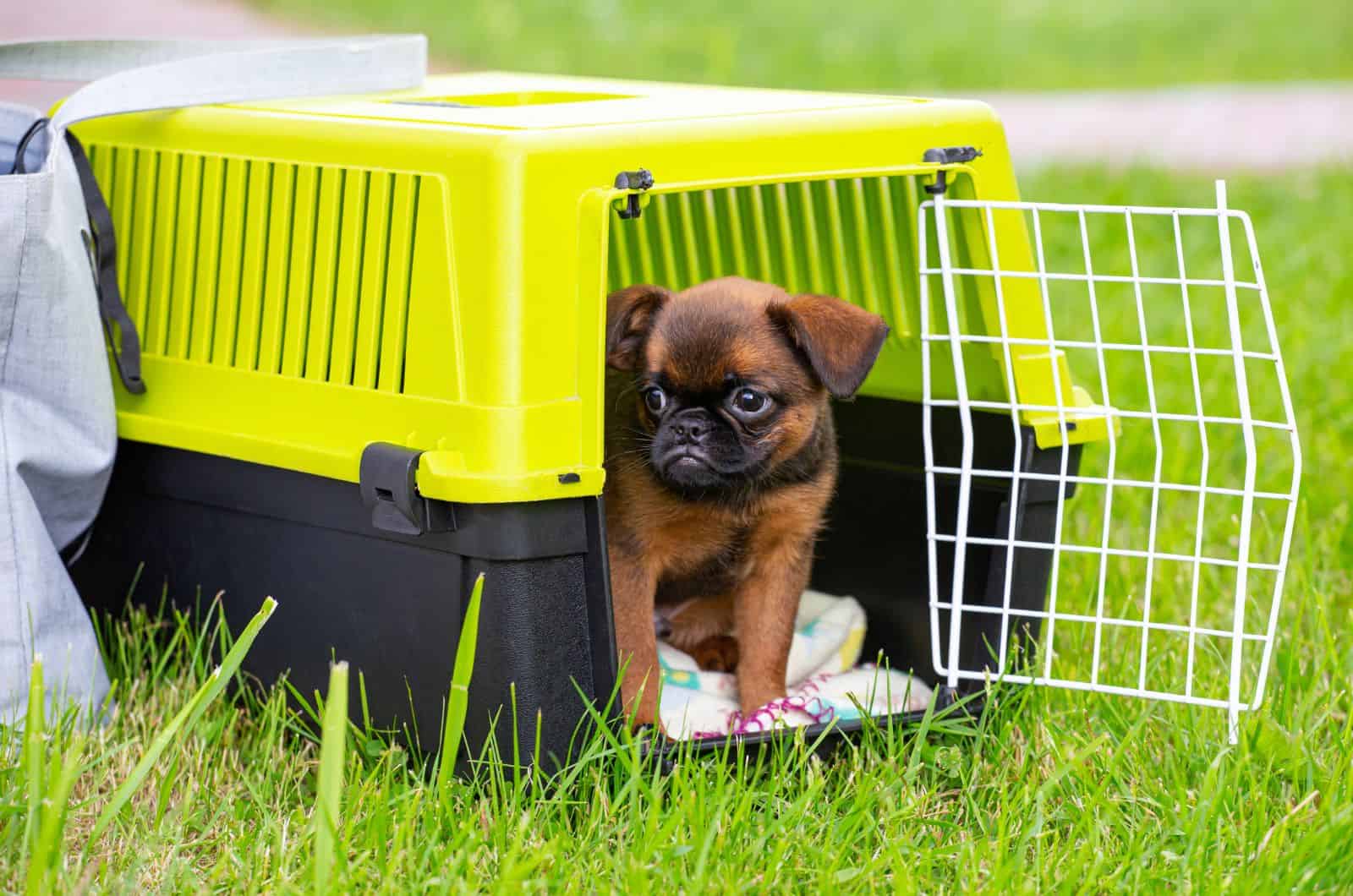Dogs are creatures of habit just like us humans. This is something that we teach them since it is a way of discipline. You set the time you will take them out for a walk or what to give them to eat. Eating the same food every day or sleeping in the same bed is nothing unusual for them.
But sometimes they break their habits out of nowhere, for instance, they may all of a sudden stop eating the food they have been eating for a couple of years or refuse to walk on their usual route. You can also ask yourself Why does my dog suddenly hate his crate?
Well, if you have ever asked that question, you are in luck because in this article we will be going through all the possible reasons of why your dog does not want to sleep in their crate in which they have slept since forever.
Before we start, we want to say that this is nothing to worry about and there are ways to fix this problem. It may be overwhelming at first but just stay patient and all will be good.
Why Does My Dog Suddenly Hate His Crate? 14 Possible Reasons
Your doggy suddenly hating his crate can happen at any moment during their lifetime. Your puppy may just start to enjoy the crate or kennel then all of a sudden after a month or so stop.
Your older dog can experience this as well. They might be enjoying and sleeping in their crate for a couple of years and just refuse to get in after all that time. This is something that will confuse the dog owners, but don’t worry there is always an explanation.
We will list some reasons why your dog may suddenly hate the dog crate.
1. Lack Of Exercise
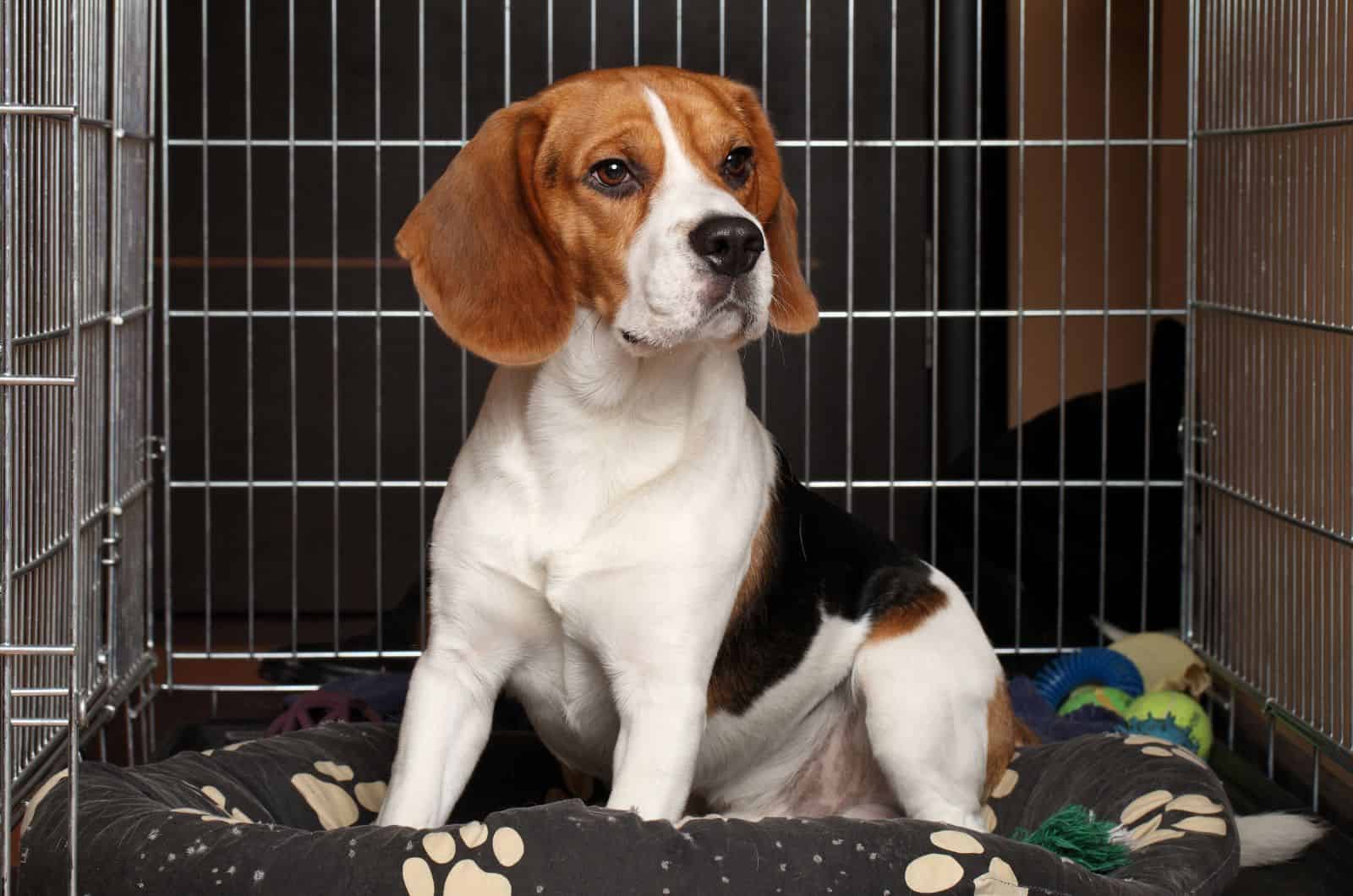
This can go two ways and connect other reasons as well. Your dog may be spending too much time in the crate all of a sudden. This means that your doggy is not getting enough physical activities, which can make them either bored or needy.
If they lack exercise it might seem to you that your dog just hates the crate and wants to get out because something else is bothering them, but in fact, they are trying to tell you that they need to let their energy out.
The other thing is that the dog may not even be spending too much time in the crate but still is not getting enough exercise. They will probably refuse to get in because they want to go out and play.
Lack of training can lead to separation anxiety, aggression, boredom, and being needy, which can all affect the willingness of your dog spending time in the crate.
RELATED: How To Socialize An Aggressive Dog: A Simple Guide For Dog Owners
2. Discomfort
If there are some changes to the crate your dog might not like it and feel uncomfortable. You need to set some rules when crate training your pooch. If you did not let them eat in the crate and then suddenly you let them, the dog may not like the smell of food in its crate.
The more serious and important thing that can bring them discomfort is when there is damage to the crate. Something may be poking and hurting them. This is the first thing you need to check if your dog does not like the crate all of a sudden.
Some dogs will show you the problem by themselves, while others tend to just run from the problem. An interesting thing about dogs is that they tend to lick your hand or even the part that is potentially hurting them to show you that they are uncomfortable.
Make sure to check all the corners and thoroughly investigate the inside of the dog crate. If you don’t find anything that may be hurting them try putting more blankets and toys for them to feel more comfortable.
3. Changes To Their Crate
When you think of a dog crate you need to know that this is their bedroom in a sense. This is a place where they feel safe. Any minor changes can trigger them a bit.
You may think that you are doing your dog a favor by replacing their favorite toy or blanket with a new, better, and cozier one, but this can startle the dog a bit.
Don’t worry, you aren’t doing anything wrong, just try to do it gradually. You may want to give them the new blanky or toy but at the beginning leave the old ones as well. This way they will get used to the new stuff.
The new toys and blankets will also get the smell that they are familiar with, and then you can remove the older stuff.
If you decide to get a completely new dog crate or kennel, try to do it gradually as well. This can be a bit of a shock for them so make sure that they are comfortable with the change.
4. Changes In Environment
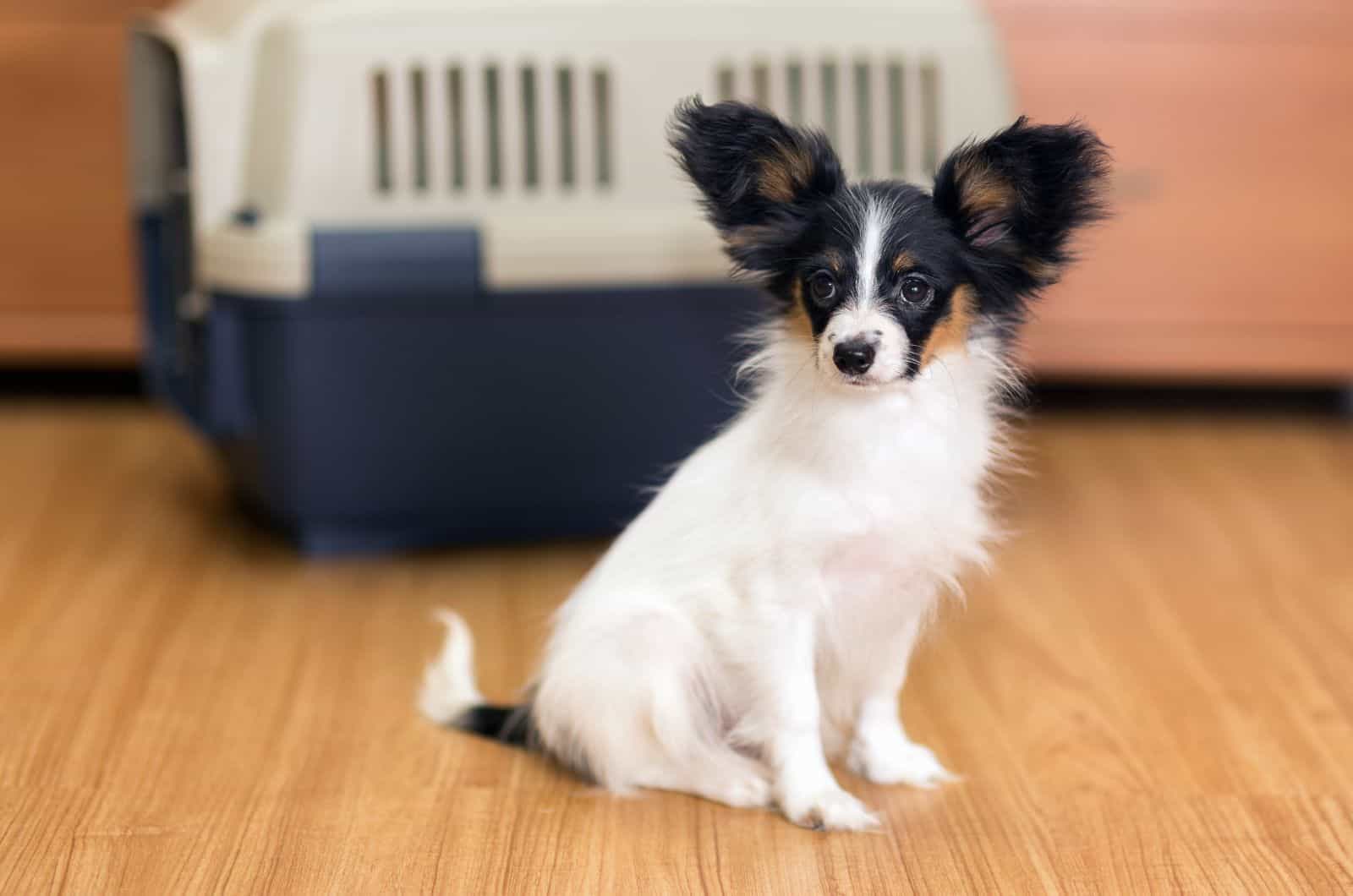
This is one of the most common reasons why your dog may suddenly seem like it hates its crate. For example, my dog hates changes. Once, when I moved his dog bed to a different corner of the room he got so confused and refused to get into the bed.
He will sleep on the floor where the dog bed used to be. Some dogs may not be as dramatic as mine is, but they will for sure feel the change.
The placement of the crate should be set while they are puppies. An old puppy can get used to some changes quicker but the older dogs may struggle with it a bit.
Of course, there will be some times when the placement of the crate is needed but just try to do it as slowly as possible. Try doing it for a night or two, and if you see that your dog is confused, return it to the old place for a couple of days. Repeat that until the dog gets comfortable.
You may find your dog even barking at nothing because they get confused because of the environment change.
An interesting thing about crate-trained dogs is that they might refuse to go in the crate if there are some changes made to the room, for example, if you remove some decorations or add other ones.
Dogs tend to lounge in their crate and observe their surroundings and by that, they remember some of the small details in the room. If you remove something that they have been looking at for a long time,hey can get confused and think that they are in a completely different room.
5. Getting Big
This will be more obvious especially when a puppy is getting into adulthood. The best thing to do is to get a big crate from the start so that, even when the dog grows up, they stay in the same crate because the changes in the crate can be a bit stressful for them.
Make sure that you are keeping an eye on the size of the crate and dog while they are growing up. They need to fit perfectly and have some space to move around in it.
6. Using The Crate As Punishment
A crate should never be used as a type of punishment when your dog is misbehaving – even if it is convenient. This will make your dog have a negative association with the crate instead of it being their safe place.
When you lock your dog in a crate after their bad behavior it will make them dislike the crate. This will be especially confusing for the dog if you start this punishment after years of not doing it.
A crate should be a place where the dog relaxes and not where the dog will be doing their punishment time. Try to use positive reinforcement and make sure that they feel comfortable.
Try to offer the dog some food while being in the crate and leave the crate door open so they know they are not prisoners in there but that they can get in and out freely.
RELATED: Will My Dog Forgive Me For Hitting Him? Advice For Dog Owners
7. Being In The Crate For Too Long
Leaving your dog in the crate for long periods of time or in other words over-crating can make your dog have bad feelings towards its crate. If the dog does not have time to roam freely in their home but instead spends most of the day in the crate, it will surely make them hate crate time.
They will refuse to get in. This may seem like a sudden occurrence but they are surely feeling like that for a long time. They might start feeling needy and aggravated and attached to you all of a sudden, which is completely normal. If you have more obligations during the day, ask a friend or a family member to spend some time with the dog.
Make sure that you give your dog a lot of cuddles and positive associations to the crate so they know that spending time in their crate is a good thing.
RELATED: How To Keep A Dog Entertained While At Work: 19 Tips & Tricks
8. Small Dog Syndrome
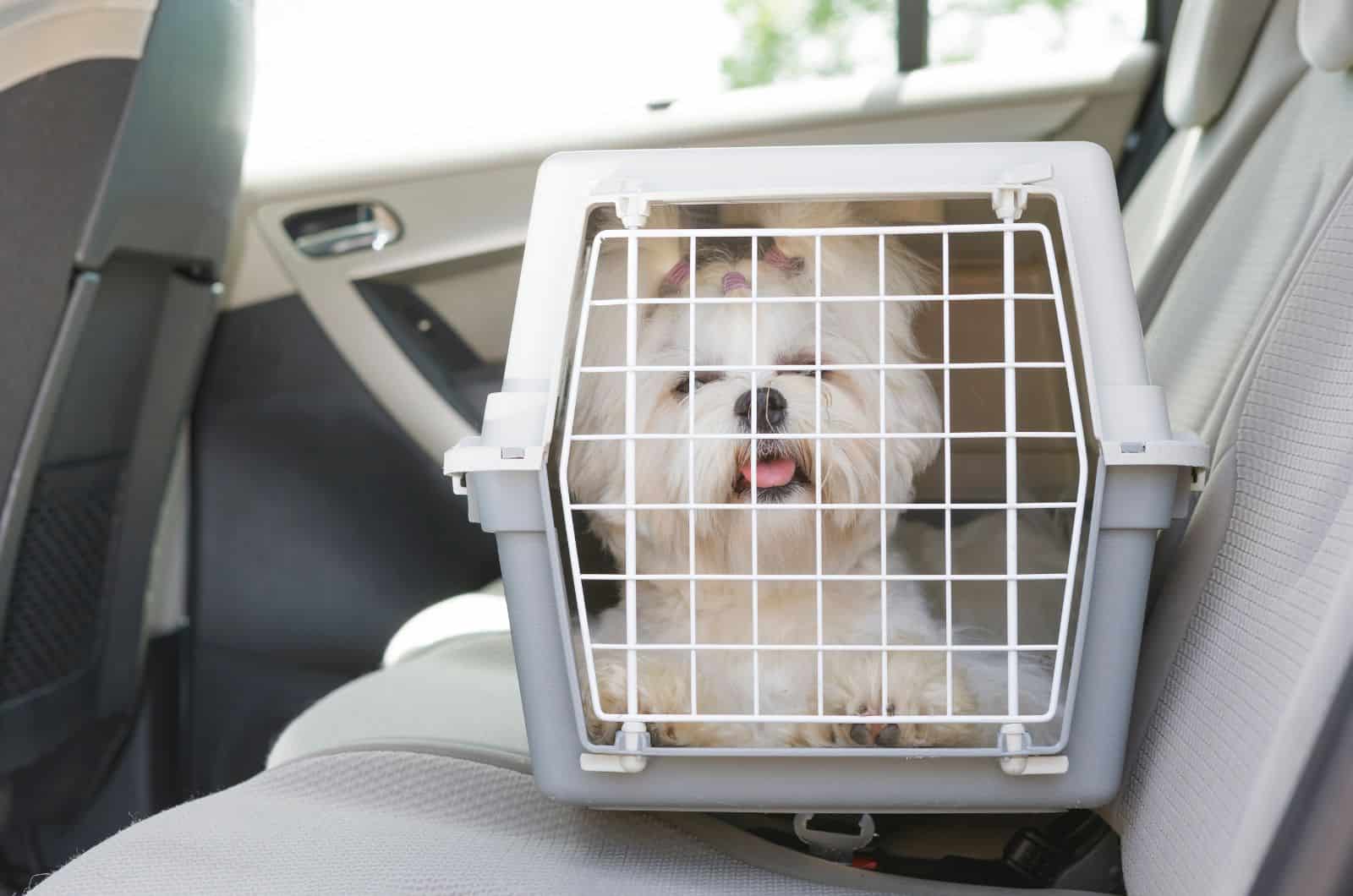
Small dog syndrome is something that is connected, well, with small dogs. When you think of small dog breeds you notice that they get out of any situation where they misbehave.
This is connected with them being cute, small, and fragile but don’t let that fool you. If a toy Poodle or a Chihuahua snaps on its owners or doesn’t go through with the commands, it is often forgotten and forgiven.
You may not say so for a German Shepherd or a Pitbull. This way, if a small dog does not want to spend time in the crate and shows that, you will probably feel bad and let them out.
If your dog shows some aggression signs, doesn’t listen to their commands, and refuses to get into its crate, you are probably dealing with a dog that has Small Dog Syndrome. All in all, this is most often the dog owner’s fault but don’t feel too bad.
Every person will do anything for their dog but sometimes it forms a pattern that will give your dog a reason to misbehave, which is bad for both the dog and the owner.
If you notice this type of behavior, seek help from a professional trainer who has the option of house training so your dog can get used to its everyday surroundings and rules.
RELATED: Why Are Chihuahuas So Aggressive? Top Tips For A Calmer Dog
9. Separation Anxiety
Dogs, just like us humans, can get anxiety and this is something that can be overseen at times. Some dogs are needier than others but every dog needs to feel safe and calm in its home.
When it comes to crates and dogs’ behavior, dog owners tend to leave the dog in the crate when they leave home because they are showcasing some bad behavior. This is convenient for the owner but it can be a bit stressful for the dogs.
They can associate crate time with them being separated from you. You will notice that they will refuse to get into the crate even when you are at home. This does not mean that they don’t like the crate, but they don’t like the aftermath of them getting into the crate.
Because of this, they can develop separation anxiety. Your dog will be needy and even destructive when they notice that you are about to put them in the crate because they know that you will be leaving them soon.
You can seek help from a professional dog trainer so your dog will not need to be put in the crate when you leave the house. You can also ask someone to look after your dog while you are being out of the house.
10. Age
Old dogs may have problems with being in the crate. As they get older they develop some health issues that can make crate time uncomfortable. A lot of old dogs have urinary incontinence, which sometimes makes them have a pee accident in their crate.
Older dogs like to have the freedom to roam around the house and lounge anywhere they feel like. You can always keep the crate but leave the crate door open. This way they have the freedom to enter and leave the crate as they wish.
If they have bone problems they will also like to be able to find the perfect spot within the house so they can take a comfortable nap.
Older dogs getting out of the crate can be a sign that they have some health problem so this can be a sign that a vet visit should be done.
RELATED: Younger Dog Attacking Older Dog: 6 Causes Of Aggressive Behavior
11. Seeking Attention
Our dogs are our best friends and we all love to spend time with our dogs, but some dogs love it more than others. When your dog seeks for attention it does not mean that you are not providing it with enough attention but they are just needy.
Of course, a dog can become needy if they don’t have enough exercise or if you all of a sudden spend a lot of time out of the house.
They will offer you their toys a lot of the time, and they might follow you to the bathroom, but they will most definitely try to avoid crate time and instead try to sneak in your bed for some cuddle time.
But don’t fall under the pressure instead you need to stay consistent. You can play with your dog but when crate times come you need to make sure that your dog is in otherwise they will get used to not getting in.
You can spend some time with them near the crate, play with them, and give them treats to make them feel more comfortable.
12. Smell Of Other Animals
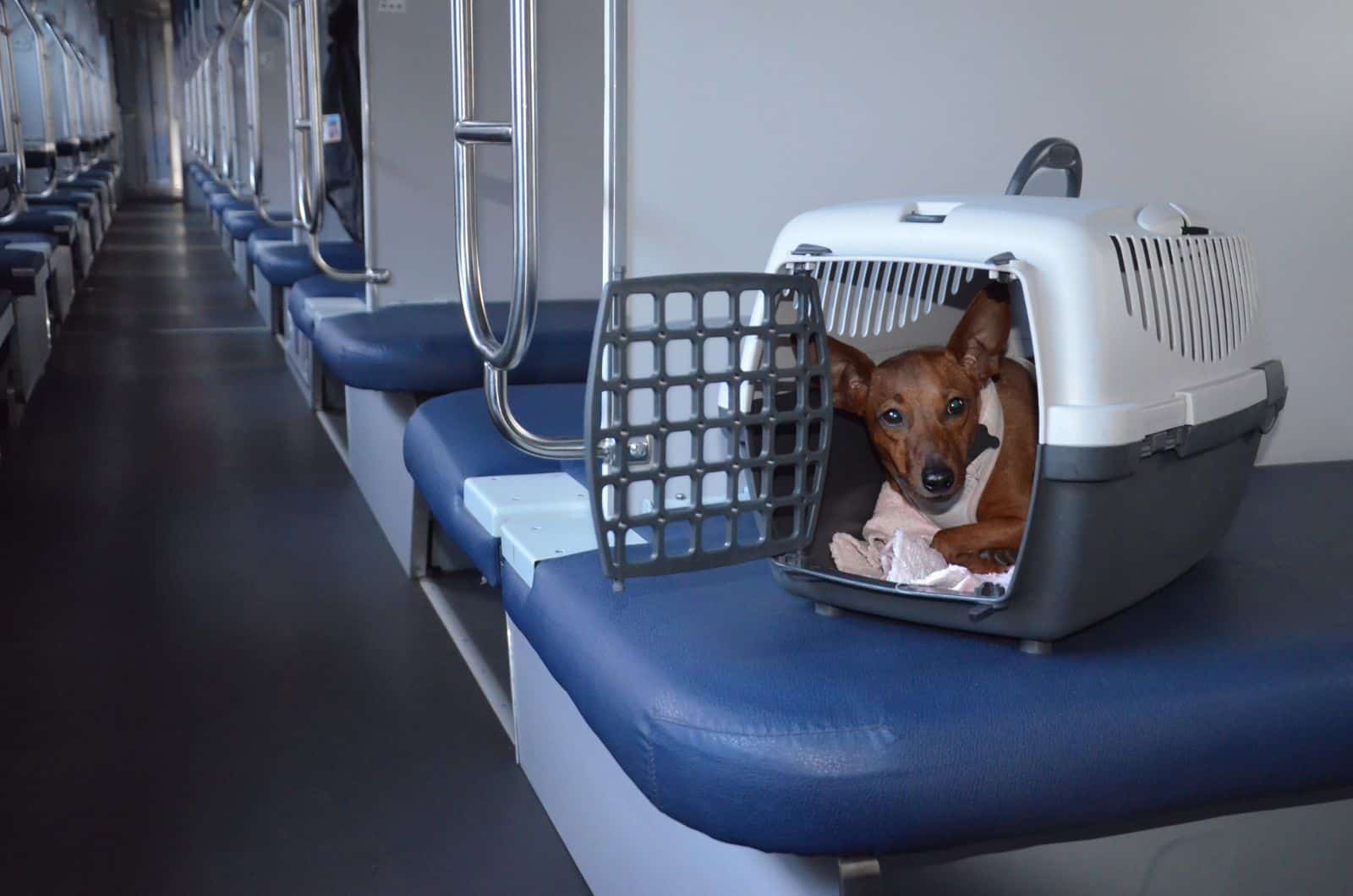
It is a known fact that dogs have a strong sense of smell. Any difference in their surroundings they will notice it, especially if another animal was there. This is easier when you have either two dogs or a cat besides your dog.
They will get used to the smell of the animal they are living with but can still have problems with that animal entering their crate.
Animals that they are meeting for the first time can be a problem for them. They can even sense that an animal was there for a moment in a small room, let alone if the animal was in their crate.
They will refuse to get in because they might feel like their safe space has been compromised. You need to get rid of the smell of the animal but firstly try to remove any animal from being near their crate.
This can depend on the dog’s age. The new puppy might not mind another animal being around their crate while an adult dog will be fully aware.
13. Boredom
If your dog gets bored in their crate they will try to do anything to get out. Make sure that the dog is fine and has no other issues. When you realize that they are just bored, try not to give in, especially during the times when they need to be in the crate, like nighttime.
Dog behavior that includes a lot of whining, crying, and barking can be overwhelming but try to stay persistent. When you give your dog enough attention, love, cuddles, and mental stimulation you are set and need to know that your dog is just being silly and wants to get out.
This just means that the dog is trying to get out of the crate even during the night when you both know that playtime is over. They might beg for hugs but there is plenty of time during the day to give them hugs and kisses.
You can have some restless nights with a bored dog.
You can try to move the crate from the living room to your bedroom to make the dog more comfortable during the night.
14. Changes In The Routine
If you and your dog have a set schedule you can consider that as an amazing thing. But if that schedule all of a sudden gets changed, your dog may have some problems.
They will most likely get confused and because of that may refuse to get in the crate at all. Whatever the reason for the schedule change may be, make sure to present the new schedule to the dog as soon as possible.
This can feel like training your dog to the crate all over again and it can be frustrating for both you and the dog but make sure that the experience is as calm, positive, and persistent as possible.
If the change is just temporary, then you are good just try to go through the change patiently.
11 Solutions So Your Dog Will Love The Crate Again
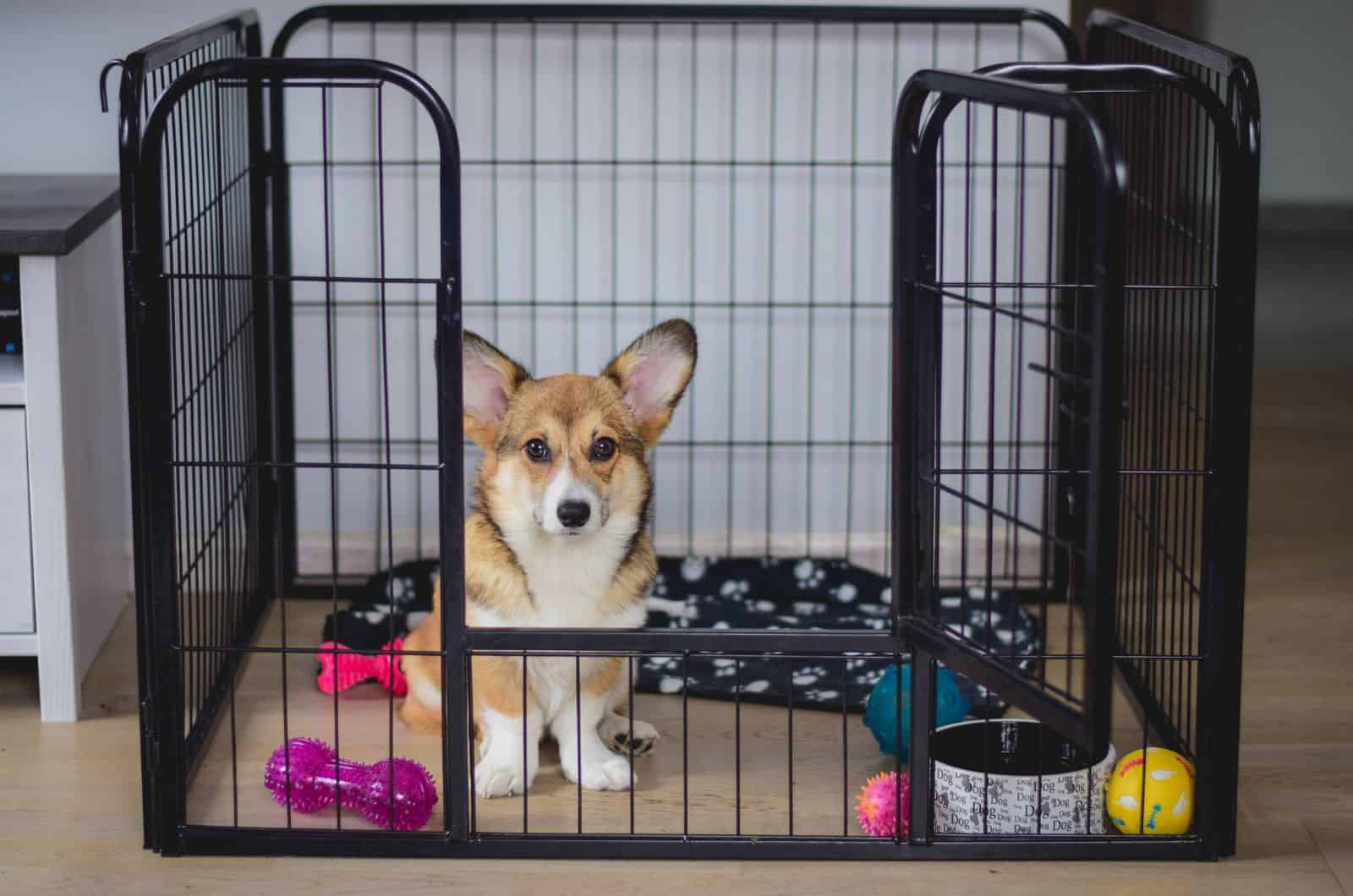
Since our dogs don’t know how to talk to us, they communicate in other ways which can be seen in some of the reasons why they don’t go in the crate anymore.
Your dog can stop eating or go to the bathroom in the house as a way to show you that something may be wrong or that something is bothering them. Why does my dog suddenly hate the crate is a question whose answer may need some time to figure out.
We saw the possible reason and now we will list some of the solutions. Some of these may apply for a couple of different reasons.
1. Determine The Reason
This is the first and key thing to do when you see your dog suddenly disliking the crate. If you don’t know the reason behind this behavior you will most likely not be able to find the solution to it.
There is a big difference if your dog does not want to be in the crate because it is bored or has separation anxiety from being uncomfortable because something in the crate is poking them. The solutions will be completely different.
Boredom and separation anxiety can be harder to detect and need even more analysis to find out if your dog is lacking something that you need to provide them or if they just came into that state of mind because of their age or personality.
2. Schedule Crating Time
This depends a lot on the lifestyle that you lead. If you are working a big portion of the day and your dog is best behaved being left in a crate then you need to make a schedule surrounding that. Leaving your dog in a crate is never easy.
For that reason, you should do it gradually and make the schedule as they grow up so it becomes comfortable for both you and your dog.
If you plan on leaving your dog in the crate during the night then the schedule is easier to make and to maintain. You may experience some restless nights, but it will be all worth it in the end.
If you want them to be in the crate for a couple of hours during the day, and then again when night falls you need to have some sort of a routine so your dog will adjust to the schedule. When you get them out of the crate during the day you should immediately have play time or give them some treats.
This way they won’t have a problem being in the crate for a couple of hours during the day because they will figure out that something fun will come afterward.
3. Make It Comfortable
The main thing you can do to make a crate more comfortable for your dog is to put blankets, pillows, or toys in. This is good to give them while they are puppies so they can get used to it. This can depend on whether or not you live in a warmer climate where a lot of blankets may make your dog hot and uncomfortable.
In this case, giving them a couple of their favorite toys will be enough. Another thing you need to do is to make sure that the crate is clean.
There is always a possibility of them peeing or pooping in the crate as well as them getting dirty or wet in it. Because of this, you need to clean the crate and everything in the crate regularly.
It is a good idea to have a couple of their favorite blankets and toys, so when one is washing you have another one to give to them.
4. Make Your Dog Tired
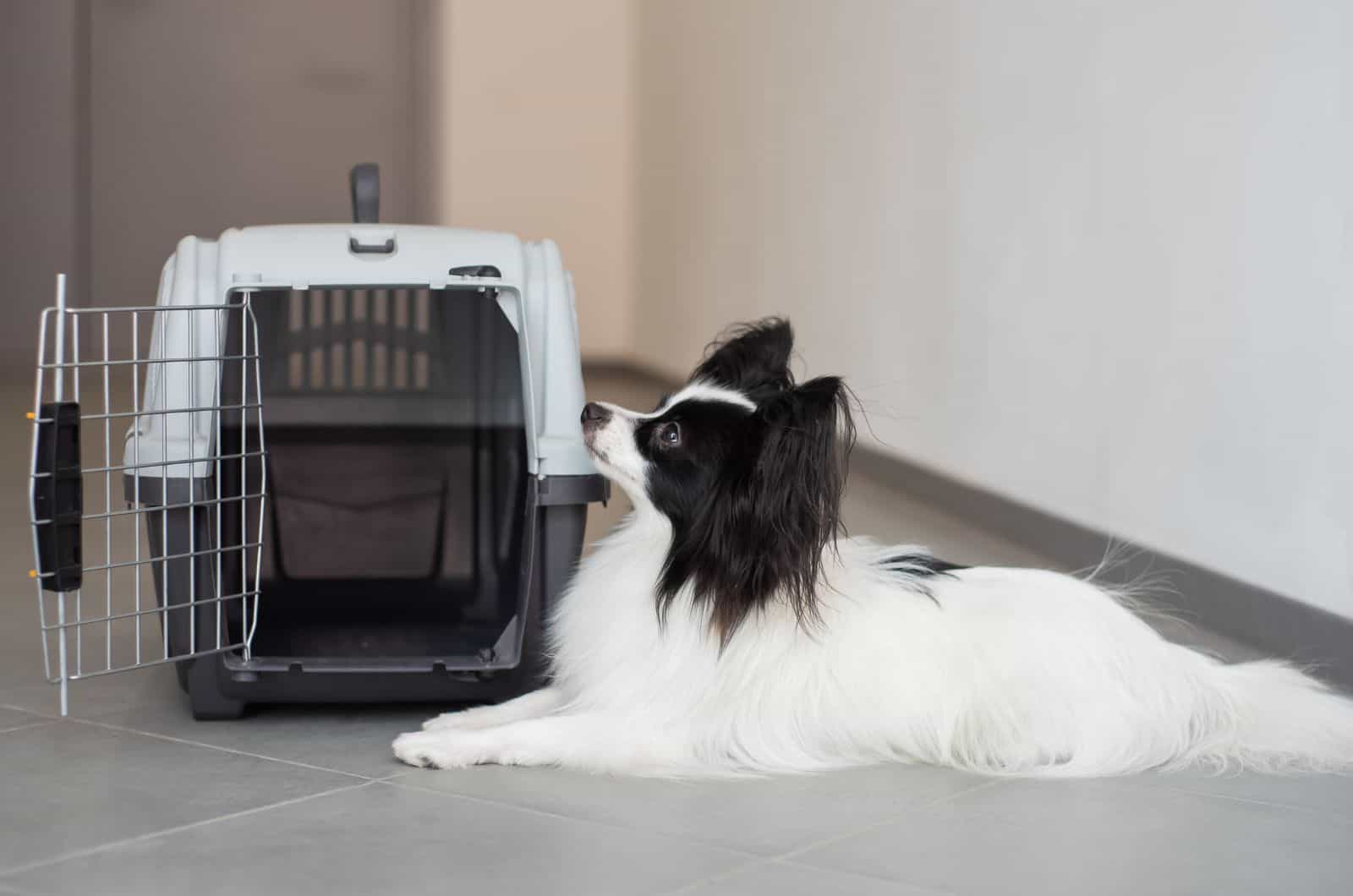
If you notice your dog being fussy and barking a lot as soon as you put them in the crate it most likely means that your dog has a lot of energy.
Depending on how long you need your dog to be in a crate you need to make sure that you tire them enough so they can stay calm in there. How and for how long you will tire your dog depends on their energy level, breed, size, and age.
You can take them for a long walk or playtime in the dog park. You can even give them puzzle toys which can tire them a bit as you are getting ready for work. This is more for dogs that have low energy levels.
If you have time you can also play fetch by throwing them a ball or frisbee. When your dog is nice and tired and tucked in their crate, leave them with some chewy or any other toy.
5. Make Crating Positive Experience
The most important thing is to make the crate a safe, comfortable, and happy place. When you determine the reason for your dog getting out of the crate all of a sudden you need to re-train them to love and enjoy the crate.
Playing with your dog or taking them out right before and after crate time will make your dog associate the crate with something good.
It needs to be the right size as well so they can feel as comfortable as possible.
You should never use a crate as punishment because they will never want to get in and will only associate it with bad feelings.
Keeping it clean and never forcing them will help a lot. A crate is a place where your dog will feel the most comfortable to sleep and go if things get overwhelming.
6. Start Small When It Comes To Crate Training
For people that decided on crate time for their dog crate training is very important, it is almost as important as potty training. With every type of training, including crate training, you need to start small and gradually make them used to it.
When you start the training with your puppy the worst thing you can do is lock them in the crate for a long time. This can be traumatic for the dog and can even result in them becoming aggressive or anxious.
The first steps should last only a couple of minutes, even with the crate doors opem for the first couple of times.
After the time passes you will gradually increase the time spent in the crate and then try to see how they will behave if left alone in the room while being in the crate.
This will take some time and patience but we believe that you can do it!!
7. Be Consistent
This is the most important thing when it comes to crate training but it can get a bit tricky. Why? Well, we as dog owners will do anything for our dogs, so if we see them in distress our automatic reaction is to remove them from anything that is making them upset.
Sometimes there might be a real serious reason for why your dog wants to get out, but most of the time they just want to get out.
When you toughen up a bit and realize that your doggy is using its puppy eyes on you so they can get out, it will be easier to stay consistent.
If you let your dog out every time they whine a bit and every time you want to play with them or cuddle with them during crate time, the dog will get confused. They won’t get a hold of the schedule and this can cause a lot of problems in the future.
Try to leave them in for periods of time when you decide it is best for your dog to spend in the crate.
8. Reward According To Merit
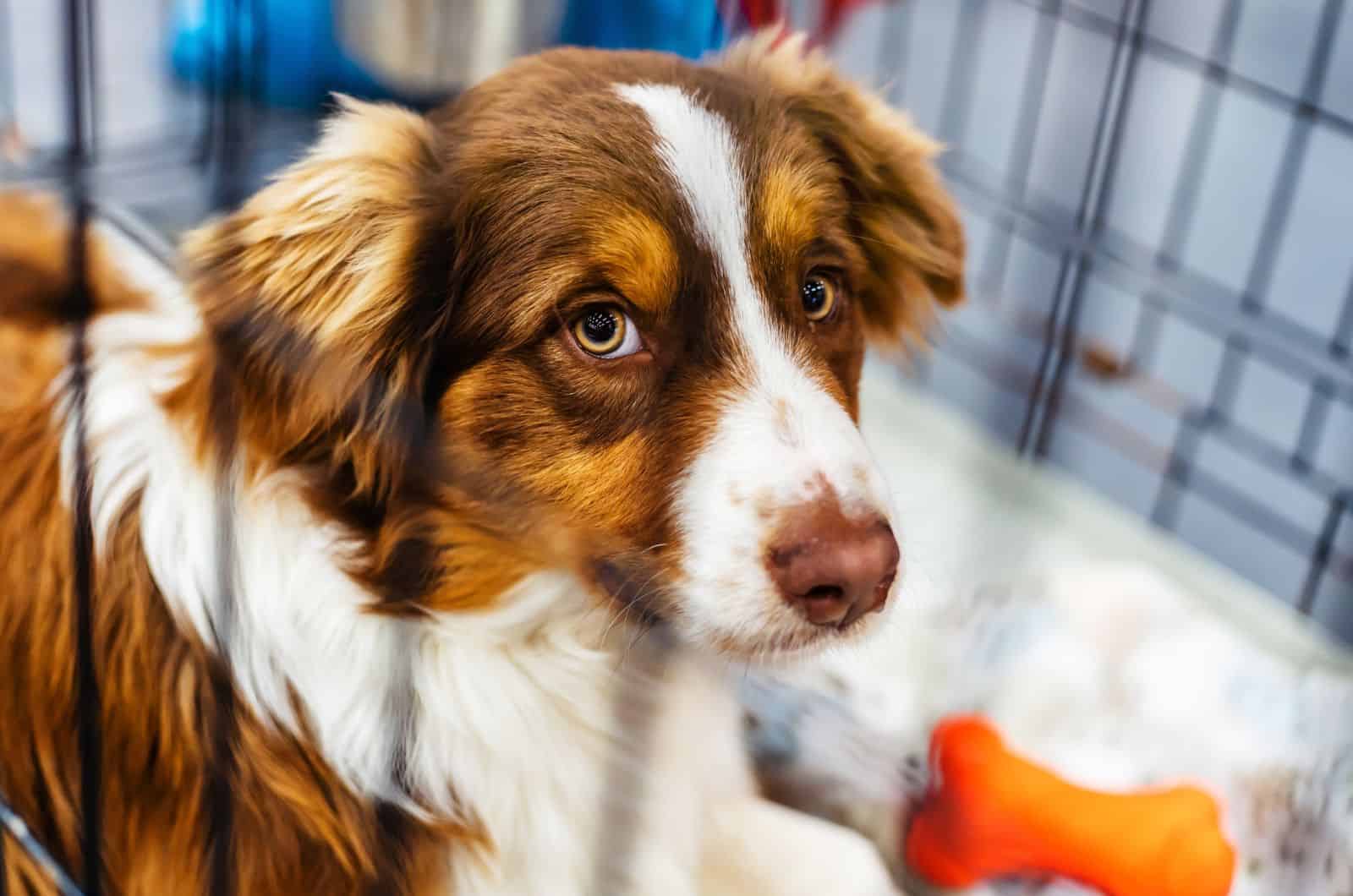
When you are crate training your pooch make sure to give them a reward every time they make an improvement. In the first period of training, rewards will be endless but after some time you will need to reward only the new accomplishments.
When your dog all of a sudden dislikes its crate you will need to use treats as rewards every time they get in. This can be considered as re-training your dog.
Don’t give your dog a treat if they just step foot in the crate and then leave. This way they may think that you are rewarding the fact that they left.
When they fully get in and stay for a bit you can give them a treat. This way they will gradually start liking crate time again.
9. Treat Separation Anxiety
Detecting separation anxiety with dogs can be tricky and difficult. Some of the signs that your dog has separation anxiety are:
– Escape attempts
– Drooling
– Peeing and pooping inside the house
– Trembling
– Pacing
– Crying a lot
If you notice this you should take your dog to the vet to determine if your dog suffers from anxiety, or God forbid some other big problem.
Treatments for separation anxiety can differ from dog to dog. Some dogs will need medication to get through this tough period. Some people like to get another dog that will keep the first dog company.
This works amazingly for some dogs while for others not so much.
Sometimes spending more time with your dog and providing them with a lot of playing and love might do the trick. But whatever the case might be, visit the vet and ask for advice.
10. Place The Crate In The Bedroom
If your dog sleeps in the crate and needs to spend the whole night in there the best option is to put the crate in the bedroom so they can feel more secure and calmer.
Some dogs hate being left alone for a long period of time, especially during the night. Your dog being with you during the night will for sure make the whining and barking go away because that was their way of calling for you so they don’t feel alone.
If you don’t feel comfortable with the idea of your dog being in your bedroom, at least try to put them in a room near you so they can feel that you are close.
11. Alternative
There are always other things you can use to make your dog more comfortable and to prepare them for the crate. A baby gate or an exercise pen can be a good alternative.
You can also do some DIY with a dog bed and some type of fence. This is for the more crafty people. The above-mentioned things can be bought on Amazon and there are various options.
Things You Need To Consider While Setting Up A Crate
Your dog may start hating his crate because of some of the setup factors. Some of these were already mentioned but we wanted to put them all in one place so you can know exactly what you need to keep in mind.
Some of the things you need to consider are:
– Location. This depends on the available space in your house. Puppies and even some adult dogs don’t want to be alone so the crate will be best set in the bedroom. Some dogs like their peace so it will be best to isolate them where not a lot of people go. But every dog should be placed somewhere where it is calm so they can feel relaxed.
– Size. The size of the crate should not be either too small or too big for your pooch. The too-small crate is definitely a bigger problem than the big crate. The dogs should be able to lay comfortably and have some space to lay in different positions.
– Comfort. It is important to make the crate comfortable for your dog by adding blankets, pads, toys, or pillows. For puppies a bed that is waterproof is important and it is important generally for the bed to be functional. For older dogs, comfort is much more important.
– Games. Playing games in the crate or near the crate will make your dog have a positive association with the crate. Giving them attention while they are in the crate is important as well.
– Food and water. Leaving food and water in the crate is something that not a lot of people agree with. You can always find bowls that you can attach to the crate so the dog does not tip it over. It is a good idea to leave the water, especially during the night. If you and your dog do not want the smell of food in the crate it is perfectly normal to leave the food bowl in another place.
To Sum It Up
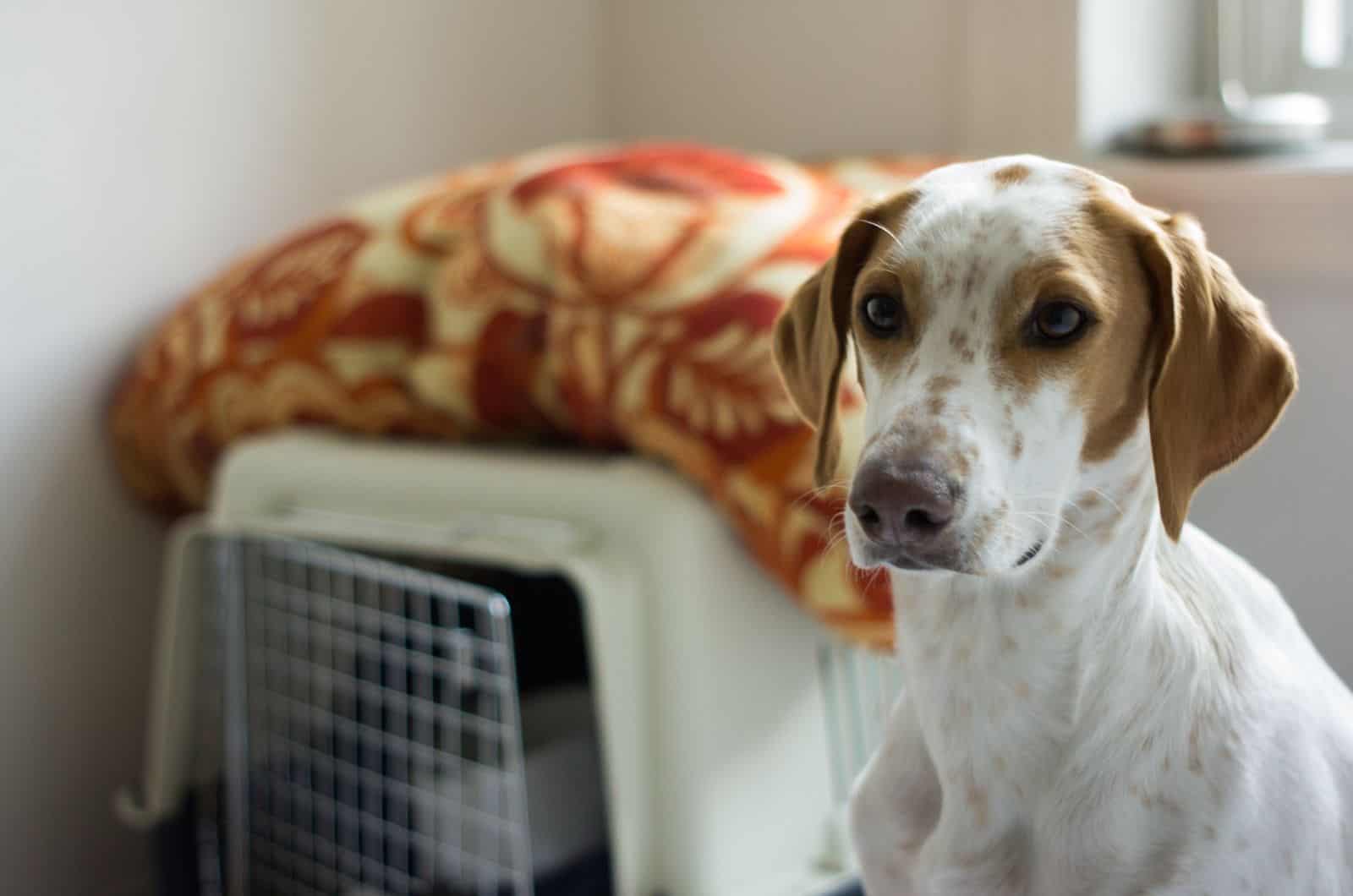
Why does my dog suddenly hate his crate is a perfectly normal question that a lot of dog owners can ask themselves. There are people who don’t want their dog sleeping in the crate so they do not have this problem.
There are a couple of reasons as to why your dog might not like the crate as it did before. The main thing you need to do is to detect the problem to make sure that your dog is not having some issues.
Some reasons are easier to detect and to solve while others need more time and patience. This all can get confusing for both the owner and the dog but don’t worry, there is a solution to every problem.
We have listed some of the solutions that may help you. We hope you find this article useful.
